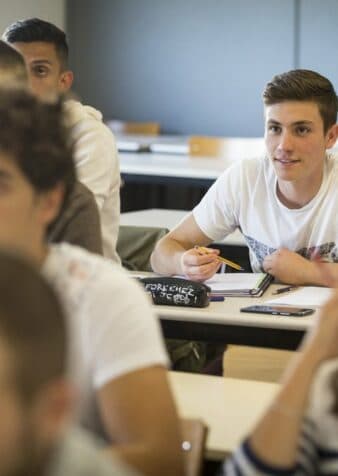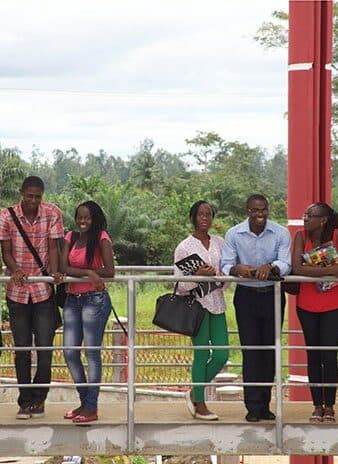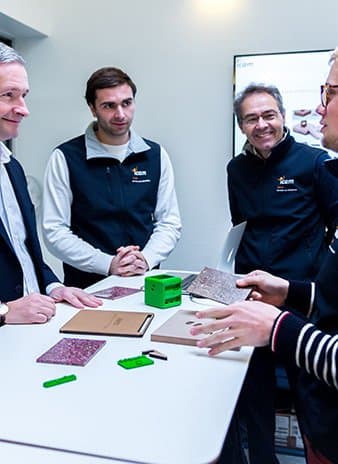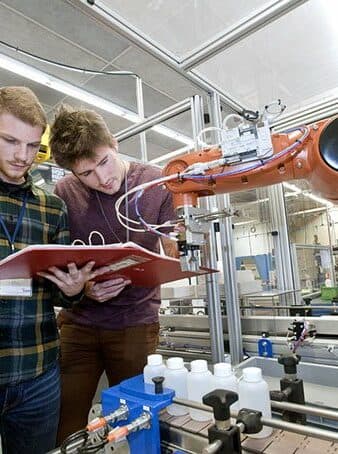Fine-grained basketball move recognition from Inertial Measurement Units and Computer Vision by Recurrent Neural Network modelling
Master thesis- Axe :
- Human and robot interaction
- Site :
- Nantes
- Nature :
- Master thesis
- Personne(s) encadrante(s) :
- Jérôme Rocheteau
Needs & Requirements
Digitalisation of sport activities and specifi cally collective indoor sports such as handball, volleyball and basketball is a trendy research topic at Icam. A platform – called Digisport – has already been developed that makes it possible to collect data from IMU devices, to build RNN models that fi t these data and to process IMU data streams by the means of such RNN models.
These RNN models process IMU data and provide the most probable activity done by the human being that wore the IMU device at the corresponding timespan. This is called sensor-based HAR with respect to vision-based HAR. Whereas human beings should wear one or several devices in sensor-based HAR, only cameras are required in vision-based HAR. However, vision-based HAR requires larger datasets than sensor-based HAR, building vision-based HAR datasets is much more time-consuming than building sensor-based HAR ones. In addition, vision-based HAR models are mostly less accurate than those of sensor-based HAR, require more computing resources, etc. Finally, sensor-based HAR and vision-based HAR remain two distinct and separate research areas despite their common aim.
The Digisport platform has been proven to make it possible to build sensor-based HAR datasets as well as sensor-based HAR models quickly and easily. Icam aims at extending this platform to vision-based HAR.
Glossary
IMU Inertial Measurement Unit
RNN Recurrent Neural Network
CNN Convolutional Neural Network
CV Computer Vision
HAR Human Activity Recognition
MSR Master Degree Thesis
Hypothesis & Objectives
The main objectives of this MSR from the platform point-of-view then consist of:
1. upgrading the platform for synchronously collecting both IMU and CV data
2. upgrading the platform for easily building hybrid IMU and CV datasets
3. upgrading the platform for easily training vision-based HAR models from CV datasets and sensor-based HAR models
Basketball has been chosen for providing the study case as individual basketball moves can be structured as hierarchical classes. For instance, a class of moves that corresponds to catching the ball can be split into several moves such as rebounding, defl ecting, intercepting. Another class that corresponds to releasing the ball can be split into passing, shooting; and shooting can be split into many kinds of shots. As for dribbling the ball that can be split into several different manners of dribbling as well. The main objectives of this MSR from the basketball domain point-of-view then consist of:
4. investigating scientifi c literature about IMU-based and CV-based datasets and models for HAR in basketball
5. running a scientifi c study about individual basketball moves
6. writing a scientifi c report and submitting it to an international conference or revue such as the International Journal of Computer Science in Sport
Work Packages
This MSR is planned to fi t within 5 months starting at the M0 milestone and ending at the M5 milestone. Each milestone corresponds to a 1-month boundary. It can be then organised according to the following 6 work packages:
- WP-1 IMU dataset (M0 – M3) building a dataset of basketball moves from IMU data
- WP-2 IMU-based model (M0 – M3) training and evaluating a RNN model based on the IMU dataset
- WP-3 IMU-enhanced CV dataset (M1 – M4) building a dataset of basketball moves from CV data and HAR model
- WP-4 CV-based model (M2 – M5) training and evaluating an CNN and RNN model based on the CV dataset
- WP-5 State-of-the-Art (M0 – M4) building a scientific literature review
- WP-6 Writing (M4 – M5) writing a technical report and a scientific article
The scientific study about basketball moves is conducted during the first 4 work packages as well as the platform updates and enhancements. Deliverables consist both of programming codes for the platform updates and of documents for the technical report and scientific article.
- Compétences requises :
-
Candidates should have skills in programming, databases, data analysis, data mining, and artifi cial intelligence. Interests in sports and in basketball would also be appreciated. It is strongly suggested to include CV and motivation letter to the application. The latter must be sent via email to the supervisor. Shortlisted candidates will be invited for a (video) interview.
- Application 10th, June 2025
- Interview 17th, June 2025
- Notification 24th, June 2025












